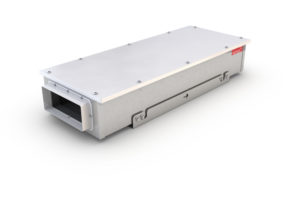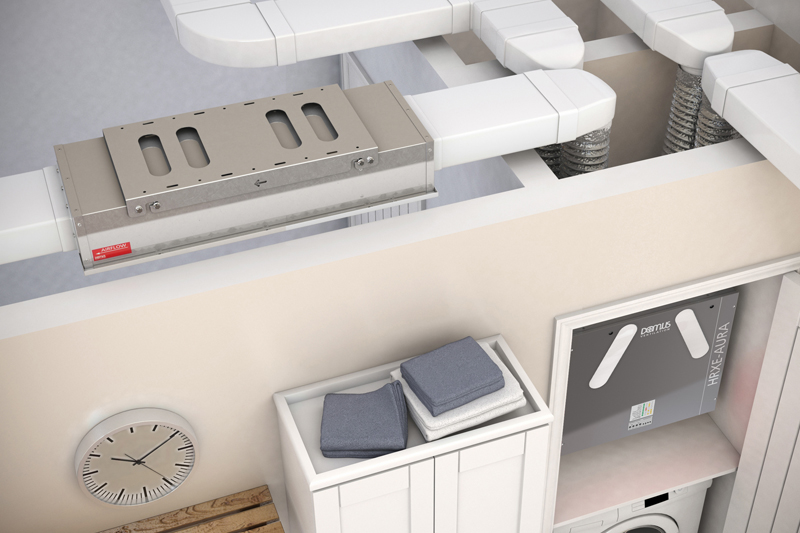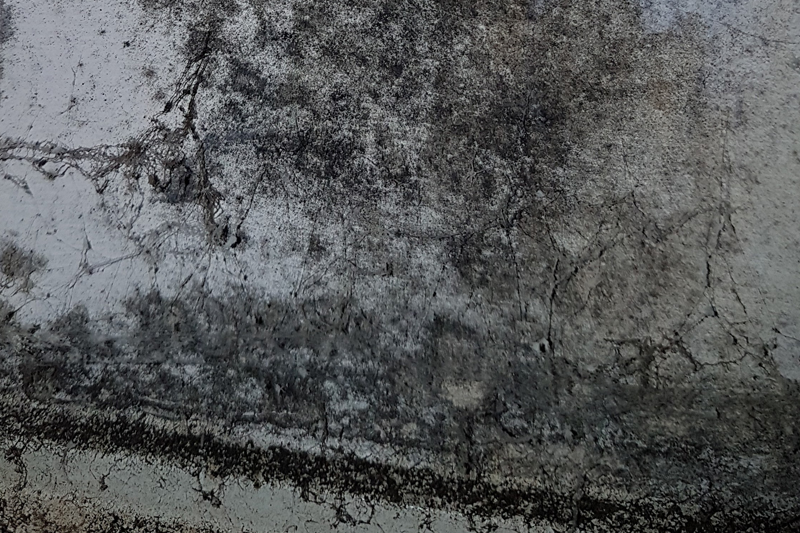Paul Williams, Domus Ventilation Product Manager, offers advice on how to take advantage of the growing residential ventilation market
The UK’s ventilation market is experiencing a period of significant growth and, where there is growth, there is opportunity to be had. Whilst commercial ventilation systems are less likely to be sold through wholesaler and merchant channels due to their more complex nature, residential ventilation products and systems are readily available to retailers.
Exact figures addressing ventilation in the residential sector are hard to come by as they are frequently included within overall HVAC market figures (which is expected to grow from $5.34 billion in 2022 to an estimated $8.35 billion by 2028), or are amalgamated with commercial ventilation. But whichever statistics and market reports you look at, they are all predicting growth for the ventilation sector.
What is driving growth?
In the residential ventilation sector, growth is being driven by two key factors: our increasing awareness of the importance of Indoor Air Quality (IAQ), and regulatory change.
With the pandemic still fresh in our minds, stories of damp and mould making headline news, plus urban air pollution firmly on the political agenda, the demand for quality ventilation in our homes to tackle these issues has never been higher. What’s more, the UK has one of the worst records for deaths from lung disease in Europe and the highest rates of childhood asthma. Good ventilation helps disperse viruses, pollutants and dust, and prevents the formation of mould.
Regulatory changes are also a driving force in market growth, notably Building Regulations which has placed greater emphasis on energy efficiency in our new build homes with every revision. As a result, our homes are becoming ever more airtight, but subsequently we must improve their ventilation to make them comfortable, healthy environments in which to live.

But it’s not just new build homes that need better ventilation. ‘Ventilation provision and use in homes in Great Britain: A national survey,’ which aims to identify installed ventilation provision and use in 1861 British homes, found that 71 % of them did not have ventilation provision that would meet Building Regulations. The older the home, the worst the ventilation. Only 11 % of homes had mechanical ventilation and 22 % reported that they had mould or damp on walls or surfaces in their homes. The Social Housing Regulation Bill and the soon to be passed Renters’ Rights Bill include measures to address ventilation in rental properties, which have further accelerated market growth.
What ventilation products should you be looking at?
To really take advantage of the growth in domestic ventilation products across both new build and existing housing stock, I would focus on three core areas: products that enable compliance with latest regulations; products and systems that make for more energy efficient homes; and products that make for a healthier home. Let’s look at each of these in turn.
When it comes to compliance, Building Regulations Part F Ventilation should be followed. The latest revision to Building Regulations, which came into force in 2022, requires increased minimum air flow rates across all property sizes. That translates into the use of higher performance extract fans in new homes. But existing properties can benefit from this too, especially those that have issues with condensation and damp. It would be sensible to swap out older fans that will almost certainly be less powerful and therefore unable to deliver adequate air flow. It’s worth reminding customers of this as they may not have considered extract fan replacement in older properties.
For energy efficiency, Building Regulations states that Specific Fan Power (SFP) must be no higher than 0.5 Watts per litre per second (W/l/s). With extract volume rates up to 48.8 l/s but SFP down to 0.38W/l/s, Domus Ventilation’s latest Axial fans combine high performance and energy efficiency. For the ultimate in energy efficiency though, a residential Mechanical Ventilation with Heat Recovery (MVHR) system is something to push in new build properties. Increasingly popular, MVHR systems combine supply and extract ventilation in a single system, transferring the heat from the outgoing waste air from wet rooms to the incoming air. This helps reduce the home’s heating load by around 25% according to the Centre for Sustainable Energy. To ensure maximum energy efficiency is gained from any fan-based device though, it’s important to only use good quality ducting designed to work as part of that system (Domus Ventilation ducting has been third party tested for end-to-end system performance).
Another great aspect of MVHR systems is their use of filters. Our HRXE MVHR systems come with G3 filters as standard which are 80% efficient at filtering dust mites and coarse dust. With 82.9% of the population in England living in urban areas, according to DEFRA statistics, further filters can be added to MVHR systems in cities to protect against the ingress of NOX and PM2.5. These potentially dangerous pollutants are found in heavier concentrations in urban areas, especially near busy roads and at ground level. Domus Ventilation’s NOX-FILT, for example, prevents up to 99.5% of NO² pollution from entering.

Now is the time
The government has a target of 1.5 million new homes over the next five years, with reforms to the planning system expected to boost the economy by £6.8 billion, according to the National Audit Office. If the target is met, that’s a 40 year high for housebuilding and a huge market for wholesalers to tap into. Ventilation maybe just one aspect within this bigger market, but it is a valuable one in terms of revenue and health. We are, after all, an indoor nation, spending by far the majority of our time in our homes, so a healthy home environment that has good IAQ is a much happier one!
For further details, click here
Find more industry features here





